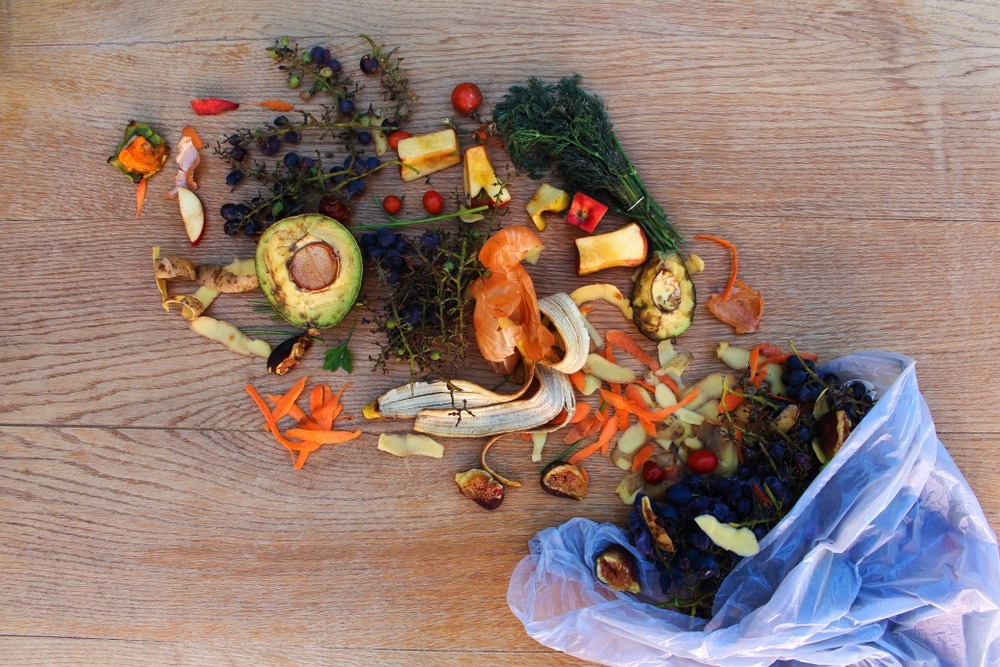Food waste is a global issue that has far-reaching implications for our environment, economy, and society. According to the Food and Agriculture Organization (FAO) of the United Nations, approximately one-third of all food produced for human consumption is lost or wasted, amounting to about 1.3 billion tons annually.

Image Credit: Victoria 1/Shutterstock.com
In this article, we discuss digital supply chain solutions and their applications, the integration of digital supply chain solutions as a promising avenue to address the complex challenge of food waste as well as their challenges and considerations.
Understanding Food Waste and Its Scope
Food wastage takes place at different points within the supply chain, spanning from production and processing to distribution and consumption. Imperfections in handling, transportation, storage, and retail contribute significantly to the problem.
This wastage is a moral and economic concern, as it means lost resources and increased costs throughout the supply chain. Addressing food waste requires a comprehensive approach that spans the entire lifecycle of food production and consumption.
The Role of Digital Supply Chain Solutions and Applications
Digital supply chain solutions leverage advanced technologies such as the Internet of Things (IoT), big data analytics, artificial intelligence (AI), and blockchain to optimize processes, enhance visibility, and improve decision-making. These technologies offer innovative ways to track, monitor, and manage food products, thereby reducing waste across the supply chain.
1. Demand Forecasting and Inventory Management
Digital supply chain solutions enable more accurate demand forecasting by analyzing historical data, market trends, and consumer behavior. This helps producers and retailers anticipate fluctuations in demand and adjust their production and inventory levels accordingly.
By aligning supply with demand, businesses can avoid overproduction, which is a significant contributor to food waste. For example, if a retailer can predict a decrease in demand for a certain product, they can adjust their inventory and promotional strategies to prevent overstocking and subsequent waste.
2. Real-time Monitoring and Traceability
IoT devices and sensors can be embedded in packaging to monitor the condition of perishable goods in real time. Temperature, humidity, and other relevant metrics can be tracked throughout the supply chain. If a deviation from optimal conditions occurs, stakeholders can be alerted, and corrective actions can be taken promptly.
This ensures that food products remain fresh and safe for consumption, reducing the likelihood of spoilage and waste.
Moreover, digital supply chain solutions enable end-to-end traceability. Consumers, retailers, and producers can access information about a product's journey from farm to table. This transparency enhances accountability and encourages responsible practices, as any issues in the supply chain can be quickly identified and addressed.
3. Just-in-Time Delivery and Routing Optimization
Efficient delivery and transportation systems are crucial for minimizing food waste. Digital supply chain solutions offer tools for optimizing delivery routes, ensuring that perishable goods reach their destinations promptly. By reducing transit times and improving route efficiency, these solutions help prevent food spoilage due to prolonged transport.
4. Dynamic Pricing and Promotions
AI-driven algorithms can analyze market data and consumer behavior to optimize pricing strategies. This can lead to reduced food waste by encouraging consumers to purchase products that are nearing their expiration dates or are in surplus. Dynamic pricing and personalized promotions can incentivize consumers to make purchasing decisions that align with supply chain goals, minimizing waste while offering value to customers.
5. Waste Tracking and Analytics
Digital supply chain solutions facilitate data collection and analysis at every stage of the supply chain. This data can be used to identify patterns, trends, and areas of inefficiency that contribute to food waste. Armed with these insights, stakeholders can implement targeted strategies to mitigate waste and enhance overall supply chain performance.

Image Credit: Gumbariya/Shutterstock.com
6. Collaboration and Communication
Digital platforms foster collaboration and communication among supply chain partners, enabling them to seamlessly share information and coordinate efforts. This real-time communication is vital for preventing misunderstandings, reducing delays, and optimizing the allocation of resources.
7. Blockchain for Transparency and Accountability
Blockchain technology offers a decentralized and tamper-proof platform for recording and sharing supply chain information. This transparency enhances accountability and trust among stakeholders. By providing an immutable record of transactions and processes, blockchain can help prevent fraudulent activities, reduce food fraud, and ensure the authenticity and safety of food products.
Challenges and Considerations
While digital supply chain solutions hold great promise in tackling food waste, their implementation is not without challenges. Adoption may require significant upfront investments in technology and infrastructure. Additionally, ensuring data privacy and security is crucial, especially when sharing sensitive information across the supply chain.
Collaboration among different stakeholders and industries is essential for the successful implementation of these solutions.
Conclusion
The global issue of food waste demands innovative and comprehensive solutions. Digital supply chain solutions offer a powerful toolkit for addressing this challenge by optimizing processes, enhancing visibility, improving demand forecasting, data analytics, inventory management, real-time monitoring, and fostering collaboration among stakeholders.
From demand forecasting to waste tracking, these technologies have the potential to transform the way we produce, distribute, and consume food.
In 2020, the worldwide digital supply chain market had a worth of $3,918.00 million, and it is estimated to hit $13,679.00 million by 2030, with a projected annual growth rate of 13.2%.
Key factors fueling this growth include increased demand for dependable and efficient order fulfillment, a surge in the requirement for cloud-based solutions for managing supply chains, and higher adoption of advanced digital technology designed for industrial applications.
By embracing digital supply chain solutions, we can move closer to a future where food waste is minimized, resources are conserved, and the sustainability of our food systems is ensured. Businesses will be able to make informed decisions, optimize processes, and minimize waste at various stages of the supply chain.
Sources:
Accenture, (2023). Supply Chain & Operations | Services & Solutions [WWW Document]. Accenture.com. Available at: www.accenture.com/.../supply-chain-management-and-operations-index
Allied Market Research (2022). Digital Supply Chain Market Statistics | Industry Forecast - 2030 [Online]. Allied Market Research. Available at: https://www.alliedmarketresearch.com/digital-supply-chain-market
Barykin, S.Y.,& Aleks, A. (2021). The Place and Role of Digital Twin in Supply Chain Management. Academy of Strategic Management Journal 20 (2).
Hofmann, E.& Langner, D. (2020). The Rise of Supply Chain Viability – Digital Solutions as a Boosting Role. Available at: www.alexandria.unisg.ch/.../details
Jandhyala, R. (2021). Intelligent Digital Supply Chains, in: Srinivas, S., Rajendran, S., Ziegler, H. (Eds.), Supply Chain Management in Manufacturing and Service Systems: Advanced Analytics for Smarter Decisions, International Series in Operations Research & Management Science. Springer International Publishing, Cham, pp. 19–64. doi.org/10.1007/978-3-030-69265-0_2
MacClaren, D. (2023). Guest Perspective: Embedding AI in Your Digital Supply Chain [Online]. ASUG. Available at: www.asug.com/.../embedding-ai-in-your-digital-supply-chain-from-end-to-end
Marotta, D. (2023). Supply Chain Risk Management: 10 Strategies for Success – Hitachi Solutions [Online]. Global Hitachi Solutions. Available at: global.hitachi-solutions.com/blog/supply-chain-risk-management/
National Intelligence Council (U.S.) (Ed.), (2012). Global Trends 2030: alternative worlds: a publication of the National Intelligence Council. National Intelligence Council, December 2012.
Souza, G.R., et al. (2021). Characterization of Digital Supply Chain, In: Iano, Y., Saotome, O., Kemper, G., Mendes de Seixas, A.C., Gomes de Oliveira, G. (Eds.), Proceedings of the 6th Brazilian Technology Symposium (BTSym’20), Smart Innovation, Systems and Technologies. Springer International Publishing, Cham, pp. 41–47. doi.org/10.1007/978-3-030-75680-2_6
Wehberg, G.G. (2020). Digital Supply Chains: Key Facilitator to Industry 4.0 and New Business Models, Leveraging S/4 HANA and Beyond. Routledge, London. doi.org/10.4324/9781003036678